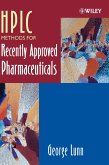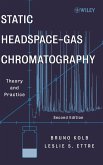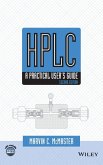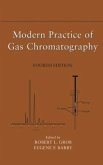In the last two decades electrokinetic chromatography (EKC) which can be regarded as an interface between electrophoresis and chromatography has matured into a powerful analytical separation technique with a very large spectrum of applications. This book is designed to be a guide to the large, rapidly growing and diverse field of EKC for a broad audience; those new to EKC, those more experienced, those interested in method development including instrumental developments and those involved with applications research in various fields.
The book aims to bring together a thorough theoretical description of methodological aspects, an overview on the current status of the various forms of EKC, and current and emerging applications, as well as looking forward to future developments. This book should be of interest for all those who need a high-efficiency separation technique with easily adaptable selectivity having the additional features of low sample volume requirements, shortrun times and high versatility.
The volume is composed of twenty-one chapters organized into three major sections.
(i) Separation Principles including an introduction to the terminology, a review of electrokinetic methods to investigate the micelle-formation process, an introduction into the fundamentals of the solvation parameter model for the (selectivity) characterisation of separation carriers, a general guide to method development and resolution optimisation with micellar pseudostationary phases, an introduction to concepts for computer-based rapid method optimization, and reviews on various forms of EKC including microemulsion electrokinetic chromatography (MEEKC), EKC with polymeric pseudostationary phases and dendrimers, EKC with pseudostationary ion-exchange phases and enantioselective EKC. The section closes with a discussion on techniques employed for on-line sample enrichment in combination with EKC
(ii) Instrumentation including the use of coated capillaries, reviews of different detection methods (laser-induced fluorescence detection, amperometric detection, photothermal detection and mass spectrometric detection) having high potential as sensitive and/or selective detection techniques for EKC and concluding with a review of the implementation of EKC on microfluidic devices
(iii) Applications of EKC in the fields of pharmaceutical analysis, the analysis of body fluids, food analysis, enantioselective analysis and environmental analysis.
With this structure the book intends to illuminate many facets of this relatively young member in the family of separation methods, bringing together expert knowledge from various directions which will not only help the novice to estimate how EKC might help in solving analytical tasks, but also assist the more experienced user in broadening and deepening their knowledge of this technique which has already found its way into routine laboratories
Hinweis: Dieser Artikel kann nur an eine deutsche Lieferadresse ausgeliefert werden.
The book aims to bring together a thorough theoretical description of methodological aspects, an overview on the current status of the various forms of EKC, and current and emerging applications, as well as looking forward to future developments. This book should be of interest for all those who need a high-efficiency separation technique with easily adaptable selectivity having the additional features of low sample volume requirements, shortrun times and high versatility.
The volume is composed of twenty-one chapters organized into three major sections.
(i) Separation Principles including an introduction to the terminology, a review of electrokinetic methods to investigate the micelle-formation process, an introduction into the fundamentals of the solvation parameter model for the (selectivity) characterisation of separation carriers, a general guide to method development and resolution optimisation with micellar pseudostationary phases, an introduction to concepts for computer-based rapid method optimization, and reviews on various forms of EKC including microemulsion electrokinetic chromatography (MEEKC), EKC with polymeric pseudostationary phases and dendrimers, EKC with pseudostationary ion-exchange phases and enantioselective EKC. The section closes with a discussion on techniques employed for on-line sample enrichment in combination with EKC
(ii) Instrumentation including the use of coated capillaries, reviews of different detection methods (laser-induced fluorescence detection, amperometric detection, photothermal detection and mass spectrometric detection) having high potential as sensitive and/or selective detection techniques for EKC and concluding with a review of the implementation of EKC on microfluidic devices
(iii) Applications of EKC in the fields of pharmaceutical analysis, the analysis of body fluids, food analysis, enantioselective analysis and environmental analysis.
With this structure the book intends to illuminate many facets of this relatively young member in the family of separation methods, bringing together expert knowledge from various directions which will not only help the novice to estimate how EKC might help in solving analytical tasks, but also assist the more experienced user in broadening and deepening their knowledge of this technique which has already found its way into routine laboratories
Hinweis: Dieser Artikel kann nur an eine deutsche Lieferadresse ausgeliefert werden.







